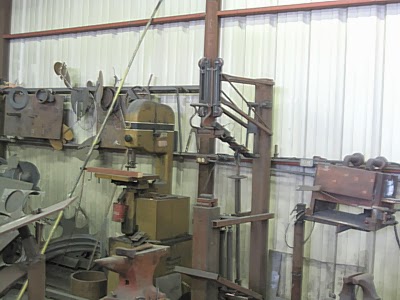The bad news is that in my beginning years I did poor work. I was eager and did a lot of it. Then I kept it all. The good news is, I’m making progress at getting rid of the evidence. The year of the purge.
I’m over 70 years old. The studio space has become crowded and I won’t be building any more so I must remove some things. Just finishing projects I’ve already started would help a lot and i work on that every day.
My shop probably reached it’s maximum state of clutter about a year ago. It became so crowded that my working space was reduced to walking paths. Over the past year I have been nibbling away at the mess, a little bit each day. Finally, I can see it is paying off nicely.
It seemed as if space was as valuable a commodity as anything else I used and I was nearly out of it. Each day I try to look closely at some bucket, shelf, bin - any small space and make some judgements. If I can’t remember what it was made for, it goes, unless I can immediately see how I can use it or modify it for current use.
A specific example is emptying two five gallon buckets congaing tongs in various stages of forging and finishing them to the state where only the bit shape needs finishing. Their foot print is not one bucket and they are readily available for dedication when needed.
If an item is related to a type of work I haven’t done in a long time or have decided not to do in the future, it goes. I can hear an old-timer advising, “Get shed of it.” If it is something which can be cannibalized and made available again for use, it gets disassembled.
There are other factors to consider. It seems more helpful to get rid of larger items first, or, at least, those which are most in my way. Things which might be sold should move up on the list.
There are a lot of old jigs for projects I’ll never do again. If the item worked well and is worth remembering, I make a drawing and scan it and dispose of the original. A digital file doesn’t take up any space.
In my mind I heard myself saying “What I have here is a failure to eliminate and it lead to big trouble.” That, in turn, recalled for me a similar sounding phrase, #11 on the most memorable movie lines list.












































